Support Page Content
2021/2022 Faculty Accomplishments
Boosting cybersecurity training expands with new grant
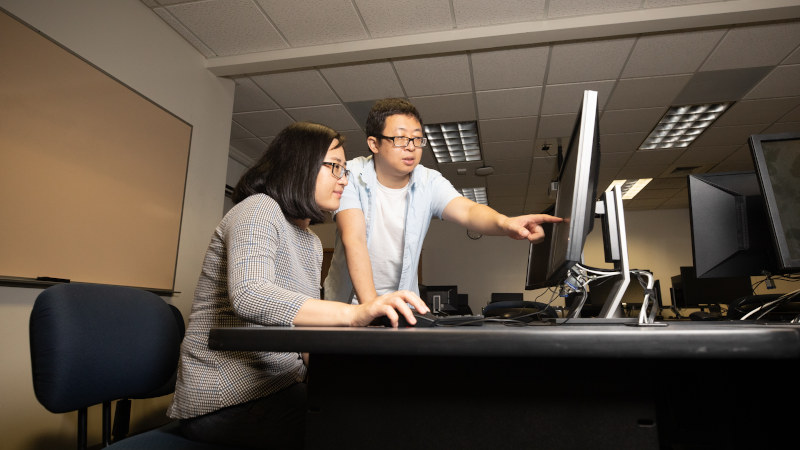
A new grant will support Sacramento State’s development of a program to train high school educators to teach the increasingly important discipline of cybersecurity.
The $518,940 grant awarded by the National Centers of Academic Excellence in Cybersecurity (NCAE-C), a program of the National Security Agency (NSA), to Computer Science professors Jun Dai and Xiaoyan “Sherry” Sun will fund the change in Sac State’s status from being a support institution to a certificate-granting university within the National Cybersecurity Teaching Academy (NCTA).
In association with Teach Cyber, NCTA is a virtual 12-credit hour graduate program that focuses on teaching foundations of cybersecurity, network security, and other advanced topics.
Statista, which logs cybersecurity issues, reports that threats such as viruses, malware, phishing scams, and ransomware attacks have become rampant in recent years, and cybercrime is among the leading causes of risk for businesses worldwide.
“There is a huge gap between the cybersecurity demands and the current throughput of workforce development,” Dai said. “A lot of positions (within) cybersecurity are not filled, and we need strong workforce development to fill in this gap. That’s the fundamental drive for a project like this.”
Mark Hendricks, interim vice president for Sac State’s Information Resources and Technology (IRT), said public universities are vulnerable to these types of attacks. The University’s IRT Cyber Security Office protects campus systems from millions of attacks each day, he said.
“Cybersecurity is a booming field,” Hendricks said.
According to Cybersecurity Ventures, there are an estimated 3.5 million unfilled jobs globally.
“Not only are there many available cybersecurity jobs, but almost every technology job has a cybersecurity component, so the earlier that we raise awareness with students, the better,” Hendricks said.
The NCTA program, which aims to equip high school teachers to educate young people and inspire them to enter the cybersecurity field, consists of nine universities and community colleges divided into three regions. Each region has one lead and two support institutions. The grant will allow Sac State, which has been a support institution for the University of Arkansas at Little Rock, to become a fourth lead institution.
Though separated by region, NCTA institutions work as a consortium to build curriculum and courses, recruit teachers to participate in the program, and provide training resources.
“Everybody is partnering together as a coalition,” said Dai, who learned of the award in early July. “The new coming project is to elevate us to one of the leading institutions, and the other participating universities will support us, depending on the needs.”
NCTA began training 90 teachers this summer. Sac State’s program will offer training to 35 more.
Melissa Dark, founder of the nonprofit DARK Enterprises, Inc., which supports cybersecurity education initiatives, says the consortium of universities and colleges has a goal of credentialing more than 500 high school cybersecurity teachers by 2025.
“Sac State has been a leader in teacher cybersecurity professional development,” Dark said. “As the consortium looked to expand, it was looking for a leading university on the West Coast, and Sac State rose to the top.”
Sun said it is gratifying to see Sac State’s rise, considering its rich experience in training teachers on cybersecurity, including its summertime hosting of the prestigious GenCyber camp program for secondary school teachers. The 35 teachers entering Sac State’s NCTA certificate program will need to have attended a GenCyber camp or show knowledge of its concepts.
Dai said instruction should begin next summer.
In April, Congresswoman Doris Matsui visited Sac State to discuss the $575,000 she secured for new Power Engineering lab equipment as well as $250,000 to create a Cybersecurity Education Security Operations Center (eSOC) classroom focused on cyber-intelligence and analysis training that will help high school students enter the field.
“Not only are (Dai and Sun) doing work at Sacramento State in research, but they’re doing great work serving the greater regional community to help train high school teachers and to attract more high school students to college and into this field,” said Kevan Shafizadeh, dean of the College of Engineering and Computer Science (ECS).
Dai, who is also the director of Sac State’s Center for Information Assurance and Security, said teaching online safety to young people is vital even if they choose not to enter the field.
“Even if some kids stay in a field not related to cybersecurity, the knowledge from cybersecurity will benefit them by protecting their online safety,” he said.
By Daniel Wilson
September 16, 2022
Dr. Holl Receives Tau Beta Pi Outstanding Advisor Award
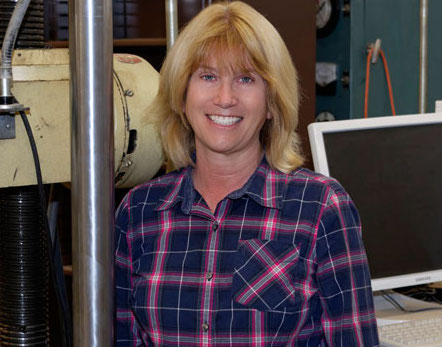
Sue Holl, Ph.D., Professor of Mechanical Engineering at California State University, Sacramento, has been selected as the 2021 Tau Beta Pi Outstanding Advisor. Dr. Holl serves as the Chief Faculty Advisor to the California Upsilon Chapter of Tau Beta Pi, one of over 400 chapters located on university campuses across the country. Each year Tau Beta Pi recognizes one person nationally for supporting Tau Beta Pi student members in promoting engineering and excellence in engineering education. Dr. Holl is the second advisor to the CA Upsilon chapter to receive this honor.
The award includes national recognition at the annual Tau Beta Pi Convention, a plaque, $1,000 to the winner, and $1,000 in the name of the winner to the dean's discretionary fund. It recognizes outstanding performance among the Chapter Advisors of Tau Beta Pi. Tau Beta Pi is the oldest engineering honor society and is the only society that confers recognition on individuals from all engineering disciplines.
Throughout her more than four decades as a faculty member, Dr. Holl has been recognized as an outstanding and inspirational professor. She was the first tenure-track female engineering faculty hired at the College of Engineering and Computer Science. Since joining the Mechanical Engineering faculty in 1980, Dr. Holl has been a pioneer in her field and paved the way for women at the college. She still actively serves as a mentor to junior faculty.
Congratulations, Dr. Holl! We at the College of Engineering and Computer Science are proud of you and thank you for your service.
Expanding Girl Power by Design
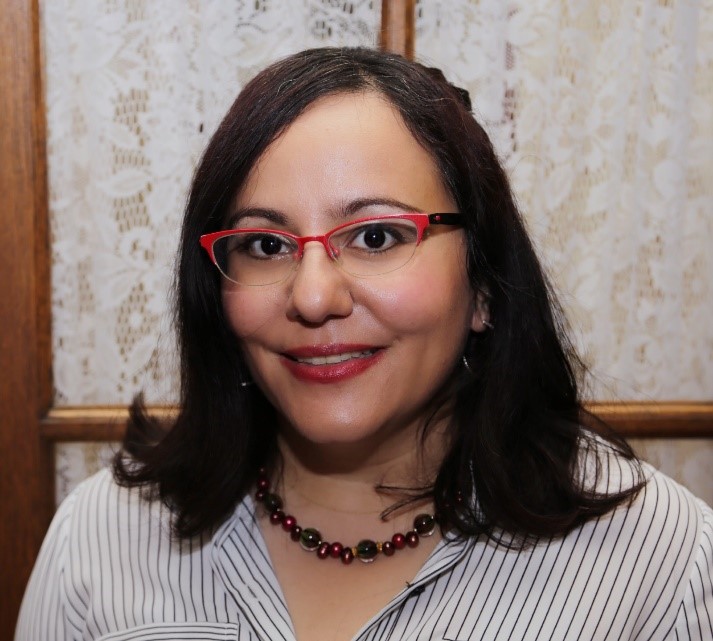 More women earn college degrees than men today. Yet, ironically, the number of women studying computer science has been steadily falling since the 80s.
More women earn college degrees than men today. Yet, ironically, the number of women studying computer science has been steadily falling since the 80s.
Even though there is an increased number of computer science offerings at the K-12 level, women of color are less likely to choose careers in computer science. The situation is dire when it comes to Black and Hispanic females. Can you imagine that not a single Black or Latinx female student participated in the A.P. Computer Science test in 13 U.S. states this past year?
Sac State researchers Dr. Aaminah Norris (P.I.), Dr. Deidre Sessoms, and Dr. Anna Baynes address this critical issue. They are spearheading an initiative that would directly impact the local community. They have been working with Elk Grove Unified School District to create a high school computing pathway that is more inclusive for African American and Latinx girls. Their initiative, Girl Power by Design, focuses on increasing the number of girls enrolled in the district’s Information and Communication Technology courses by 51%.
Dr. Baynes, a data scientist, joined Sac State’s Computer Science Department in 2017. She was selected for a National Security Fellowship (NSF) at Pacific Northwest National Lab for the U.S. Department of Energy. NSF awarded $996,427 to implement the Girl Power by Design proposal.
Mitigating the Dangers Highway Workers Face
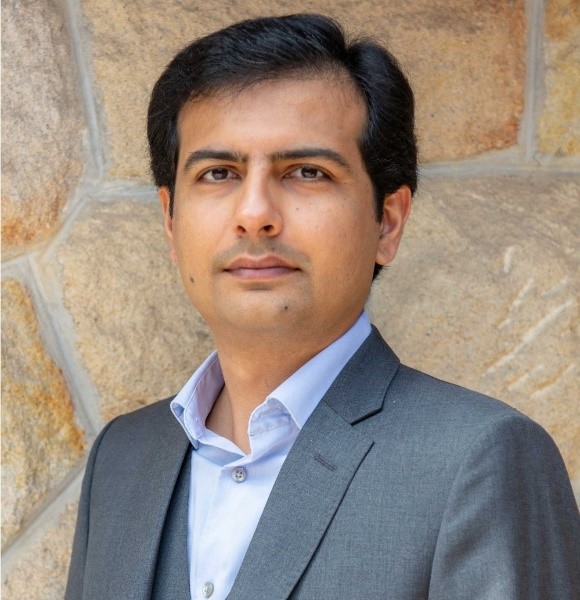 Have you ever paid attention to highway workers while driving slowly and impatiently through construction zones? If not, consider this: They often work dangerously close (within inches of) speeding motorists. They are exposed to extreme weather conditions. They work long hours, day and night. Every year hundreds of road workers are killed on the job, and a significant number of those deaths is caused by vehicles intruding into the work zones, due to inattentive driving or other causes. How can we save the lives of roadway workers and reduce the dangers they face?
Have you ever paid attention to highway workers while driving slowly and impatiently through construction zones? If not, consider this: They often work dangerously close (within inches of) speeding motorists. They are exposed to extreme weather conditions. They work long hours, day and night. Every year hundreds of road workers are killed on the job, and a significant number of those deaths is caused by vehicles intruding into the work zones, due to inattentive driving or other causes. How can we save the lives of roadway workers and reduce the dangers they face?
Ghazan Khan, Ph.D., Associate Professor and Chairman of the Civil Engineering Department at California State University, Sacramento, is passionate about improving safety on the roadways. He is leading efforts to deploy and test several Work Zone Intrusion Alarm (WZIA) systems that alert highway workers to an errant vehicle entering a work zone. Dr. Khan and his team will conduct the testing in active work zones to evaluate their effectiveness, benefits and shortcomings in real-world conditions. His research team will also conduct training sessions with Caltrans maintenance staff in closed-to-traffic conditions at the Caltrans Maintenance Equipment Training Academy, to enable Caltrans maintenance staff to independently deploy, operate and retrieve the selected WZIA systems.
Dr. Khan’s work will save lives. He has been awarded a $240,000 contract for this project from the California Department of Transportation.
Sac State Researchers at the Forefront in the Fight Against Cybercrimes
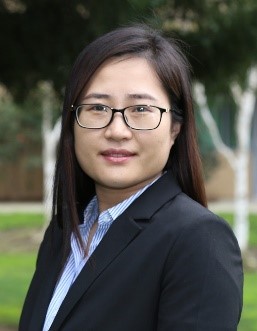
Forensic science has long been associated with investigation of crimes. In today’s rapidly changing technological world, crimes are taking on a different dimension: cybercriminals are lurking behind web pages and emails, hacking, stealing, and defrauding people. Cyberattacks are becoming more common, and cybercrimes now cost the global economy more than $1 trillion, and are expected to cost it more than $10 trillion by 2025.
Digital forensics are at the forefront of the fight against cybercrimes. Like traditional detectives, digital forensics experts collect, analyze and reconstruct digital evidence to identify crimes and the vulnerabilities of criminals, thereby developing methods to expose criminals and prevent crimes.
Xiaoyan Sun, Ph.D., and Jun Dai, Ph.D., faculty members of the Computer Science Department at California State University, Sacramento, are spearheading an initiative to teach forensics to students and provide them with an immersive experience by developing hands-on labs. These unique labs will introduce students to the latest tools in the industry and prepare them to be leaders in digital forensics. Dr. Sun and Dr. Dai have received $391,012 from the National Science Foundation (NSF) for this digital forensic education initiative.
A Man with a Passion for Energy Efficiency
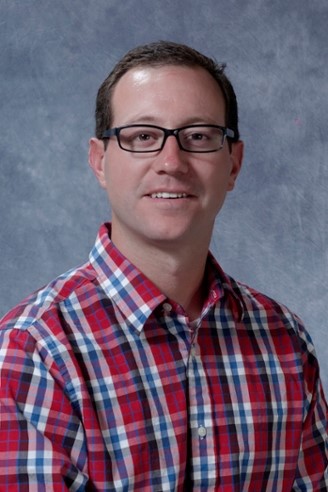 Timothy Marbach, Ph.D., a professor in the Mechanical Engineering Department at California State University, Sacramento, is a man with a mission to look out for products that fail to meet efficiency standards and waste energy. He is interested in anything that uses water, gas, or electricity, which means pretty much everything at our home, from showerhead and refrigerator to robotic vacuums. For example, a showerhead should not pour out more than 1.8 gallons of water per minute (gpm), yet some vendors continue to sell products that use over 5.0 gpm. Dr. Marbach and his students found portable electric spa models (above-ground hot tubs) that exceed the state’s energy-efficiency standard by over 2,000 kW-hr per year. They also found dozens of battery chargers that exceed the state’s standby (or “vampire load”) power requirement, using more than 1 watt of power when plugged in but not charging a battery.
Timothy Marbach, Ph.D., a professor in the Mechanical Engineering Department at California State University, Sacramento, is a man with a mission to look out for products that fail to meet efficiency standards and waste energy. He is interested in anything that uses water, gas, or electricity, which means pretty much everything at our home, from showerhead and refrigerator to robotic vacuums. For example, a showerhead should not pour out more than 1.8 gallons of water per minute (gpm), yet some vendors continue to sell products that use over 5.0 gpm. Dr. Marbach and his students found portable electric spa models (above-ground hot tubs) that exceed the state’s energy-efficiency standard by over 2,000 kW-hr per year. They also found dozens of battery chargers that exceed the state’s standby (or “vampire load”) power requirement, using more than 1 watt of power when plugged in but not charging a battery.
If you wonder if these things really matter, consider this: There are 13 million households in California, each using over 24 electronics products each. An easy-to-attain $10 in energy efficiency per month per family can save $1.5 billion in energy costs. This can be achieved simply by ensuring that the products meet the standards without even changing consumer behavior.
“An appliance’s energy use may have a small effect for one consumer, but looking at the whole state, where there are millions of people, making these small changes in products can have a large effect,” said Dr. Marbach. “The California Energy Commission (CEC) estimates that appliance standards save Californians more than 34,000 GW-hr of electricity per year. That is equivalent to taking 5.2 million cars off the street. Our lab is making sure that the products Californians buy are efficient, so that we can realize energy cost and greenhouse gas emission savings.”
CEC has provided Dr. Marbach with over $1.4 million in funding for compliance testing since 2014, and has once again extended its contract with California State University, Sacramento. This ongoing funding has enabled Dr. Marbach and his students to test over 350 products, and their investigations have resulted in over $8.3 million in settlements. Kudos to Dr. Marbach and his team for being so vigilant to energy expenditure.
Dr. Abadi Receives Outstanding Transportation Educator Award
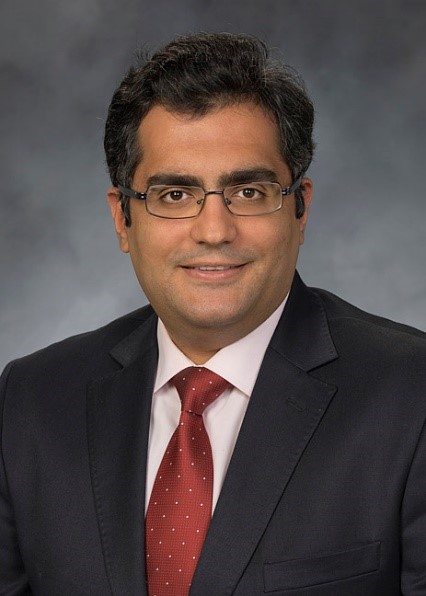 Masoud Ghodrat Abadi, Ph.D., Professor of Civil Engineering at California State University, Sacramento, achieved a feat few can boast. He is the university’s first professor honored for outstanding teaching by the Western Institute of Transportation Engineers (ITE), an international association of transportation professionals. The Outstanding Transportation Educator Award recognizes an individual who demonstrates extraordinary creativity in teaching, takes exceptional measures to spark student interest in the transportation profession, and provides unwavering encouragement for student endeavors.
Masoud Ghodrat Abadi, Ph.D., Professor of Civil Engineering at California State University, Sacramento, achieved a feat few can boast. He is the university’s first professor honored for outstanding teaching by the Western Institute of Transportation Engineers (ITE), an international association of transportation professionals. The Outstanding Transportation Educator Award recognizes an individual who demonstrates extraordinary creativity in teaching, takes exceptional measures to spark student interest in the transportation profession, and provides unwavering encouragement for student endeavors.
For those who know Dr. Abadi, this award is no surprise. Students respect his in-depth subject matter expertise. They love him for his sense of humor, kindness, patience, and compassion. They are inspired by the way Professor Abadi connects classroom learning to real-world examples. When instructions moved online due to COVID-19, Dr. Abadi quickly restructured his course, focusing on just one goal to engage students. He transformed everything, including the ways he presents lectures, conducts exams, sets expectations, answers questions, and even does handwriting. As a result, students loved attending his classes despite the loss of face-to-face interactions and Zoom fatigue during remote learning. Dr. Abadi received rave reviews from his students.
Well done, Dr. Abadi. We at the College of Engineering and Computer Science are proud of you and wish you great success.
Dr. Armstrong Receives Multi-year Contract
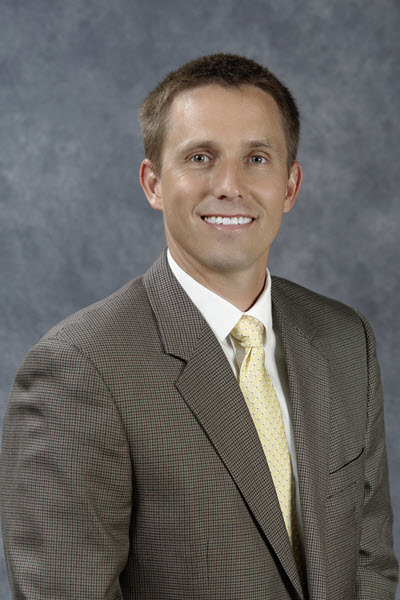
California is one of the most seismically active regions in the United States, and earthquakes are an integral part of our lives. Californians learn how to prepare for an earthquake and know the drill; drop, cover, and hold on. But what about our buildings, dams, bridges, dams, and roads. Professionals, such as engineers, scientists, and policymakers, are continuously studying and implementing ways to enhance the safety and resilience of our infrastructure. With over 1400 dams, the California aqueduct, and many other water resource installations in the state, it is essential that these structures perform well in an earthquake and protect the water and people downstream. What can we do to protect this critical infrastructure from damage in a future major earthquake?
According to Dr. Richard Armstrong, professor of civil engineering, there are plenty of ways to mitigate the effects of an earthquake. Dr. Armstrong is collaborating with the Department of Water Resources (DWR) to evaluate the seismic stability of the state's dams, the California aqueduct, and other water resource infrastructure. Dr. Armstrong will undertake multiple tasks, including developing seismic analysis methods, reviewing seismic instrumentation data, and developing early warning systems and post-earthquake damage prediction. DWR has awarded $200,000 to support Dr. Armstrong on this project that will positively affect many fellow Californians.
Teaching Cybersecurity Early On
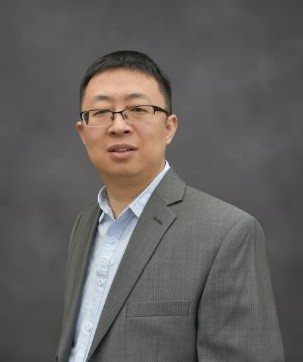 It is never too early to start teaching security in school—especially cybersecurity, which is vital for the economic growth and safety of the United States. Yet we have a severe shortage of cybersecurity professionals. There are more than 460,000 open cybersecurity positions nationwide, according to Cyber Seek. The GenCyber program, co-sponsored by the National Security Agency (NSA) and the National Science Foundation (NSF), seeks a long-term solution to the pressing problem of lack of cybersecurity staff by inspiring and empowering K-12 students to learn cybersecurity at an early age.
It is never too early to start teaching security in school—especially cybersecurity, which is vital for the economic growth and safety of the United States. Yet we have a severe shortage of cybersecurity professionals. There are more than 460,000 open cybersecurity positions nationwide, according to Cyber Seek. The GenCyber program, co-sponsored by the National Security Agency (NSA) and the National Science Foundation (NSF), seeks a long-term solution to the pressing problem of lack of cybersecurity staff by inspiring and empowering K-12 students to learn cybersecurity at an early age.
Jun Dai, Ph.D., and Xiaoyan Sun, Ph.D., faculty members of the Computer Science Department at California State University, Sacramento, received two GenCyber grants ($99,896.56 and $149,995.73) to train K-12 teachers to teach cybersecurity at special camps on the university campus in the summers of 2021 and 2022. California State University, Sacramento, is Northern California’s first institution to host GenCyber teacher camps. Pre-camp and/or post-camp outreach activities will be held throughout the year to sustain students’ momentum in learning cybersecurity. By helping secondary school teachers build their knowledge of, and teaching skills in, cybersecurity, the GenCyber program aims to bring cybersecurity instruction to secondary classes and to stimulate student interest in pursuing higher education and career development in cybersecurity.